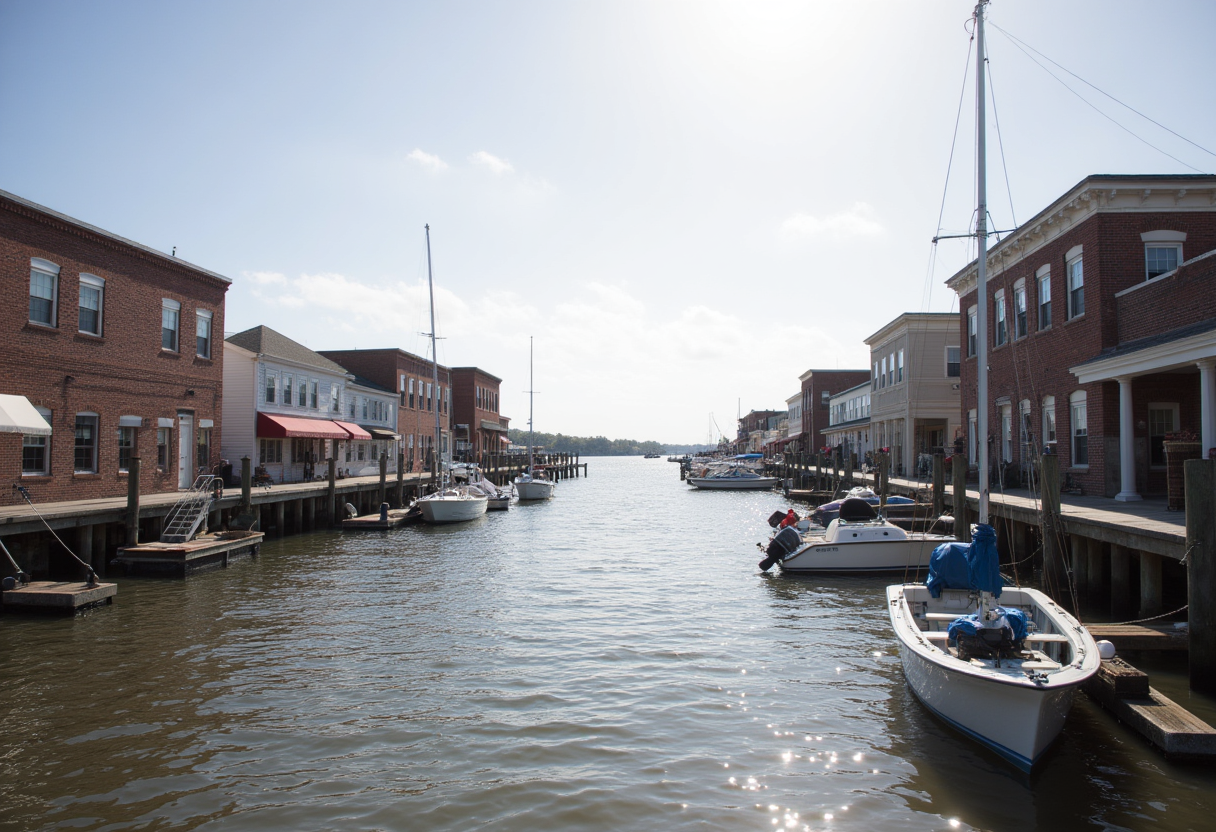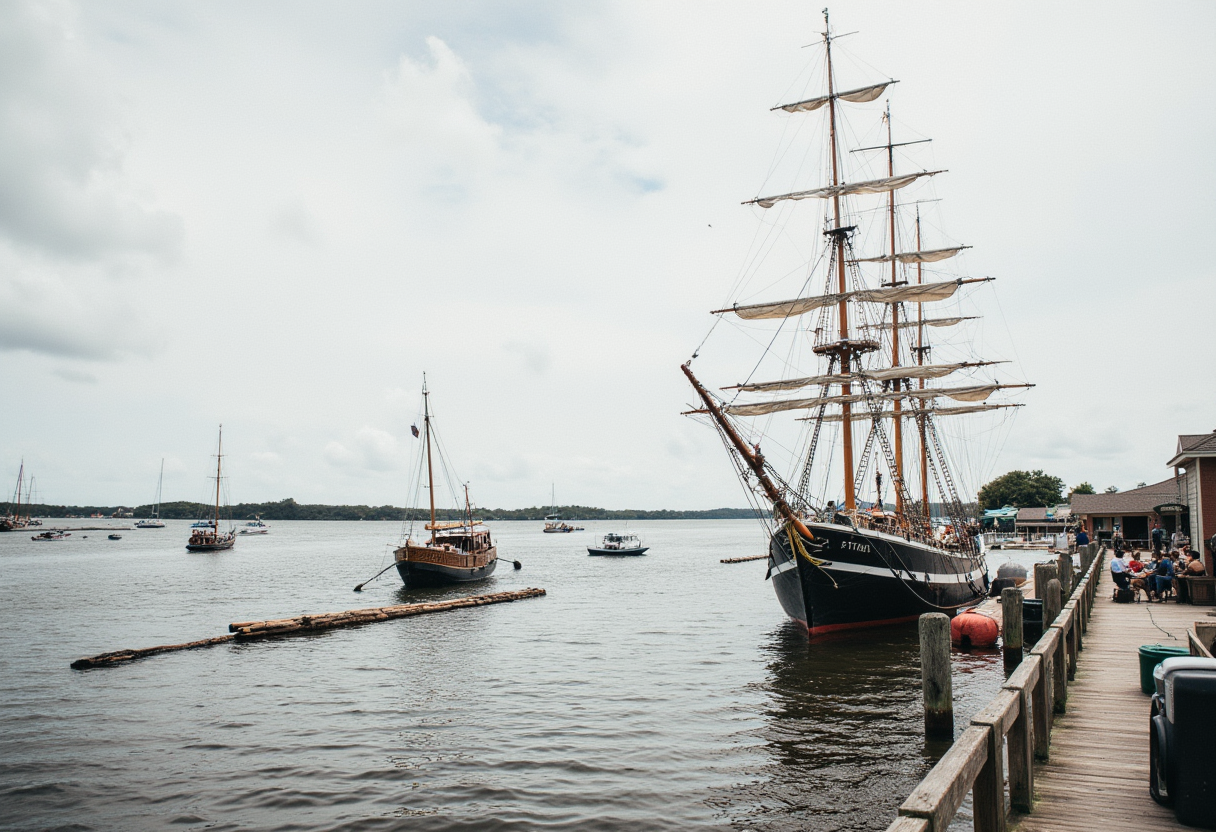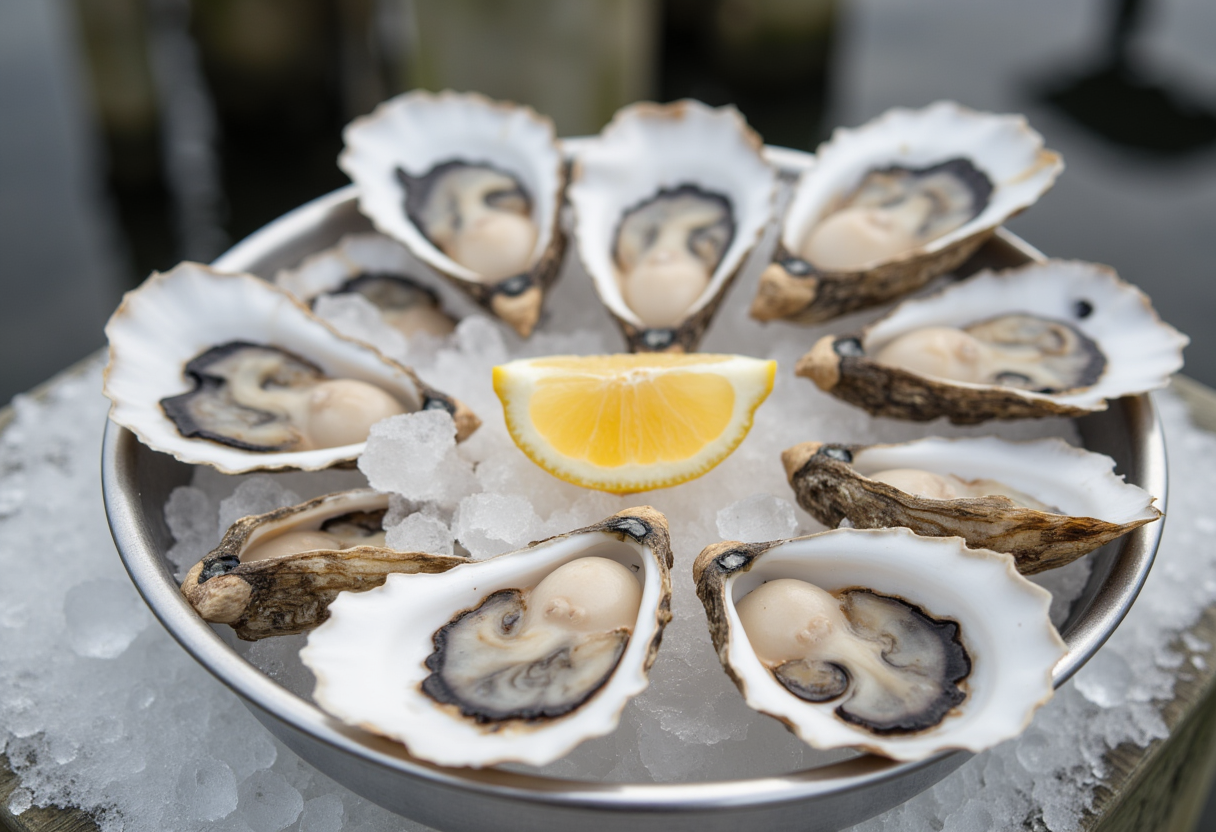Apalachicola FL A Small Town Series
Waking up in a Florida summer, sticky and breathless, is practically a rite of passage — and that humming box in your window deserves a salute.
But the story of that cool relief starts far from Silicon Valley: it begins in Apalachicola, FL — a compact, character-rich town on Florida’s Forgotten Coast in Franklin County.
Here, history is tangible, the seafood scene — especially the oysters — is near-mythic, and the legacy of a local doctor’s 19th-century ingenuity still ripples through every chilled gust from your A/C.
If you’re here for charming streets, authentic apalachicola historic buildings, and genuine small-town places that taste like the coast, you’re in the right area — and yes, bring an appetite for fresh seafood.
📍 Town Snapshot
Region: The Forgotten Coast — a tranquil stretch of coastline where quiet beaches, working waterfronts, and genuine local culture still define the area.
Population: Roughly 2,300 residents (check the latest census or town records for the most current figure).
Claim to Fame: A remarkably preserved apalachicola historic district with hundreds of 19th- and early-20th-century buildings; it’s also the place associated with Dr. John Gorrie’s pioneering ice- and refrigeration experiments that helped shape modern air conditioning.
🕰️ Quirky History: Where Timber Met Trawlers (and a Genius with a Glacier Fixation)
Long before the modern coastal boom, Apalachicola was a working port at the mouth of the Apalachicola River — a hub where timber, seafood, and global trade met. Its waterfront was alive with log rafts bound for distant cities and small boats hauling sponges, shrimp, and oysters that defined the region’s economy.
At one point in the 19th century, Apalachicola became known as one of the busier ports on the Gulf Coast (sources vary on exact ranking relative to New Orleans and Mobile — verify local maritime records for precise historical port traffic).
That maritime energy shaped the town’s culture: boatbuilders, sponge divers, and merchant seafarers all left visible marks on the Apalachicola River waterfront and the broader river system.
But Apalachicola’s most famous legacy is medical and mechanical. Dr. John Gorrie — working in the mid-1800s and experimenting around 1850 — sought ways to cool feverish patients. When nature didn’t provide ice, he invented machines to make it. Those early refrigeration experiments laid important groundwork that later influenced refrigeration and air conditioning development in the United States.
A nostalgic, slightly stylized shot of a vintage window air conditioning unit
Visit the John Gorrie Museum State Park to see a replica of his ice machine and learn more about how this small-town doctor became known for a breakthrough with national impact (link to official site recommended in the rewrite). The museum situates Gorrie’s work within Apalachicola’s broader history and the realities of 19th-century life on the Forgotten Coast.
Quick fact-check notes to include when publishing: confirm the precise year(s) of Gorrie’s experiments and any patent dates, verify local port ranking claims against maritime records, and cite sources for the scale of historical boatbuilding and sponge diving in Franklin County.
🎣 Local Flavor: A Whiff of History, with a Side of Oysters and Oddities
Apalachicola’s charm lives in its streets, its water, and its food — especially the seafood. This small town in Franklin County still wears its maritime past on its sleeve: boatyards, oyster docks, and historic storefronts create a characterful area that rewards slow exploration.
Below are top places to visit, with why they matter and quick planning tips — ideal for anyone who wants history, culture, and the freshest oysters on the Gulf.
John Gorrie Museum State Park:
A concise, essential stop — see a replica ice machine and learn how a local physician’s experiments influenced refrigeration and air conditioning in the United States. Plan 30–45 minutes; check the state park site for hours and programs.
Orman House Historic State Park:
This Greek Revival mansion offers a glimpse into Apalachicola’s antebellum architecture and landscaped grounds. Great for history buffs and photographers; combine with a downtown walk for the full apalachicola historic buildings experience.
Apalachicola Maritime Museum:
A deep dive into local boatbuilding, sponge diving, and the fishing traditions that powered the town. Recommended for families — interactive exhibits and compelling local stories about the river system and apalachicola bay.
Downtown District (Water Street & nearby):
A living postcard of antique shops, local galleries, and storefronts from the 1800s. Stroll Water Street, stop at an apalachicola seafood raw bar (many locals recommend trying a dozen oysters), and enjoy the galleries housed in converted warehouses that show the town’s creative culture.
Battery Park:
A scenic riverside spot with views over the Apalachicola River and the mouth of the river; Civil War-era artillery is on display. It’s an ideal place to watch sunsets and, often, to catch local festivals that celebrate the town’s fishing and seafood traditions.
illustration showcasing Apalachicola as a bustling 19th-century port. Feature tall-masted ships, log rafts on the river, and smaller boats (trawlers, sponge boats) near the docks.
Where to eat & drink (quick picks — fact-check and link in rewrite): Half Shell Dockside and Half Shell (local favorites for oysters and casual seafood), Owl Café for breakfast and brunch, and a few local brewing spots like Oyster City Brewing / City Brewing Company for a relaxed evening pint.
For the freshest Apalachicola seafood, ask locals where the current best raw bar is — oyster beds in Apalachicola Bay are recovering and availability can change seasonally.
Practical tips: many of these places are small and seasonal — check opening hours, bring cash for small purchases, and be courteous around working docks where fishing and oyster operations continue. If you’re curious about fishing or a hands-on oyster experience, local outfitters and guides can arrange trips into the bay or along the river.
🌊 Modern Vibe: Where Art, Oysters, and Old Ghosts Coexist
Apalachicola today feels alive and lived-in — part historic district, part working waterfront, and fully a majestic jewel of the Forgotten Coast. Artists, storytellers, and seafood lovers converge here: local galleries inhabit converted warehouses, and the apalachicola bay and river system continue to feed the town’s culinary culture.
For many visitors, the draw is the fresh seafood — especially the oysters that made the town famous. While Apalachicola oysters and local oyster beds have faced environmental and regulatory challenges, community-led restoration efforts are underway to revive harvests in Apalachicola Bay.
When oysters are available, the raw bar experience here is unforgettable.
Where to stay & sleep: The Gibson Inn (circa 1907) is a classic option for charm and history; small, charming bed-and-breakfasts round out the choices for visitors seeking a neighborhood feel. For beach time, st. George Island is a short drive away — the combination of historic Apalachicola and nearby st. george offers both culture and sand.
Eat & drink: Quick local names to fact-check and link — Half Shell Dockside (Half Shell) for casual oyster plates, Owl Café for breakfast and brunch, and local brewers like Oyster City Brewing / City Brewing Company for a relaxed pint after a day on the docks. Ask locals for the current best raw bar — seafood availability can shift seasonally as beds recover.
A close-up, mouth-watering shot of a dozen freshly shucked Apalachicola oysters on the half shell, presented on ice
🌀 Florida Unwritten Angle: The Soul of Chill
Apalachicola isn’t just a place you visit; it’s a state of mind. The town’s identity grew where sponge divers and timber merchants met, and where necessity — namely, keeping feverish patients cool — produced inventions that became known beyond these streets.
The legacy of Dr. Gorrie remains part of the local lore, and that spirit of ingenuity infuses the modern vibe.
Practical travel notes: Apalachicola is in Franklin County and easily combined with a visit to nearby St. George's Island or Port St. Joe (short drives), making it an ideal stop for a coastal itinerary.
Check state park hours (John Gorrie Museum State Park, Orman House), local event calendars for oyster festivals, and seasonal opening times for small-town businesses.
So next time your AC kicks on, spare a thought — and maybe a visit — to this friendly people and land-friendly town where oysters, art, and history combine to create a uniquely cool corner of the United States.
Earl Lee




